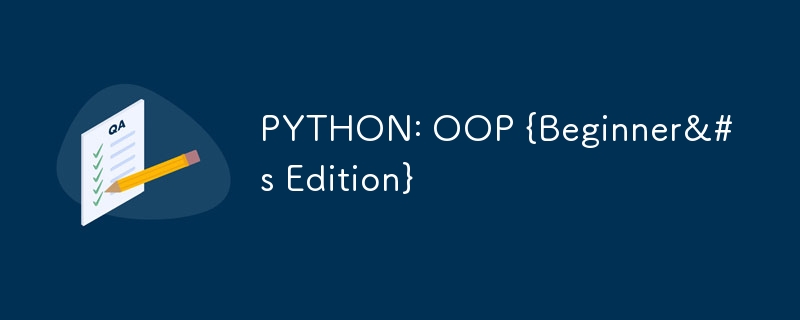

Python: Object-Oriented Programming [OOP]: is a programming paradigm (model) that uses objects and classes to structure software in a way that models real-world entities and relationships. This is based on the idea that objects can contain data and code that manipulates that data.
There are key concepts you need to know about Object-Oriented Programming:
The example below, is an example to help you reference the concepts being explained and to give you a graphical idea of how each concept looks like inside of on object, if you are starting to learn OOP, this will help you grasp what each concept is doing.
class Car:
def __init__(self, make, model, year, color):
self.__make = make
self.model = model
self.year = year
self.color = color
def drive(self):
print(f"The {self.year} {self.__make} {self.model} is driving")
# GETTER method for make
def get_make(self):
return self.__make
# SETTER method for make
def set_make(self, make):
self.__make = make
class ElectricCar(Car):
def __init__(self, make, model, year, battery_size):
super().__init__(make, model, year)
self.battery_size = battery_size
def drive(self):
print(f"The {self.year} {self.make} {self.model} with a
{self.battery_size}-kWh battery is driving silently.")
my_car = Car("McLaren Automotive", "Artura Spider", 2024, "Red/Black")
my_electric_car.drive()
What is a Class:?
In Python, a Class: is a blueprint for creating objects. It defines a set of attributes and methods that the created objects will have. For instance, you can quickly define a class like this:
class Car:
What is an Object?
In Python, and object is an instance of a class. It is created using the class blueprint and can have its own unique data. For example you can create an object like this:
my_car = Car("McLaren Automotive", "Artura Spider", 2024, "Red/Black")
my_electric_car
What are Attributes?
In Python, attributes are variables that belong to a class or an object. They represent the state or data of the object. An example of an attribute looks like this:
self.color = color
What are Methods?
In Python, methods are functions that belong to a class. They define behaviors or actions that the objects can perform. An example of a method looks like this:
TIP: when defining a method, you can add pass; temporally so that python won't throw an error when running the file.
def drive(self):
pass;
What is Inheritance?
In Python, an Inheritance is a mechanism where a new class (child class) inherits attributes and methods from an existing class (parent class). An example:
ElectricCar inherits from Car
class ElectricCar(Car):
What is Encapsulation?
Encapsulation in a bundling of data (attribute) and methods that operate on the data into a single unit (class), and restricting access to some of the object's components. In addition, you can make it a private variable by prefixing it with double underscores __. Additionally, you should provide a getter and a setter methods to access and modify the private variable.
For example, you can set a private variable like this:
self.__make = make
And add the Setter and Getter to access and modify the private variable
# Getter method for make
def get_make(self):
return self.__make
# Setter method for make
def set_make(self, make):
self.__make = make
Getter Method: get_make method is added to access the private variable __make
Setter Method: set_make method is added to modify the private variable __make
This encapsulates the make attribute, ensuring it is not directly accessible from outside the class, thus providing better encapsulation and control over the attribute.
The above is the detailed content of PYTHON: OOP {Beginner&#s Edition}. For more information, please follow other related articles on the PHP Chinese website!
 InstantiationException exception solution
InstantiationException exception solution
 delete an element from js array
delete an element from js array
 The performance of microcomputers mainly depends on
The performance of microcomputers mainly depends on
 pycharm find file method
pycharm find file method
 Linux find command usage
Linux find command usage
 What is the difference between TCP protocol and UDP protocol?
What is the difference between TCP protocol and UDP protocol?
 How to switch between Huawei dual systems
How to switch between Huawei dual systems
 How to solve the problem of slow server domain name transfer
How to solve the problem of slow server domain name transfer




